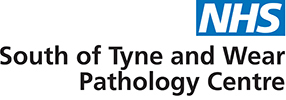High Consequence Infectious Disease (VHF, MERS, HG4)
Code:
Sample Type:
Department/test specific. Please discuss with the local duty Clinical Microbiologist.
Ref Ranges/Units:
N/A
Turnaround:
N/A
Special Precautions/Comments:
IMPORTANT!
All cases of suspected VHF infection MUST be discussed with the local duty Clinical Microbiologist who can help to perform a risk assessment. If appropriate they can then help arrange urgent local laboratory investigations.
Samples from patients who are suspected to have a VHF infection, must NOT be sent in the pneumatic tube system under any circumstances because of the potential risk of widespread contamination in the event of any leakage or breakage within the tube system.
Guidance on the risk assessment and management of viral haemorrhagic fevers (VHF), including Ebola, was updated by the Advisory Committee on Dangerous Pathogens (ACDP) in November 2015 and is the principal source of guidance for clinical staff managing patients.
This guidance is available from:
N.B. Currently recognised high consequence infectious diseases (HCIDs) relevant to UK health are as follows:
| Contact HCIDs | Airborne HCIDs |
| Argentine haemorrhagic fever (Junin virus) | Andes virus infection (hantavirus) |
| Bolivian haemorrhagic fever (Machupo virus) | Avian influenza A H7N9 and H5N1 |
| Crimean Congo haemorrhagic fever (CCHF) | Avian influenza A H5N6 and H7N7 |
| Ebola virus disease (EVD) | Middle East respiratory syndrome (MERS) |
| Lassa fever | Nipah virus infection |
| Lujo virus disease | Pneumonic plague (Yersinia pestis) |
| Marburg virus disease (MVD) | Severe acute respiratory syndrome (SARS) |
|
Severe fever with thrombocytopaenia syndrome (SFTS) |
Sample type and requirements:
Blood Science
- 4mL EDTA vacutainer containing whole blood. (purple top)
- 4mL Sodium citrate vacutainer containing whole blood. (blue top)
- 5mL Serum vacutainer containing whole blood. (yellow top)
Microbiology
- One tube of serum (yellow top)
- One tube of EDTA (purple top)
- Urine sample
- Nose/Throat swab in Viral Transport Medium (VTM) , NPA, or BAL, if airborne HCID suspected
Protocol:
IMPORTANT! For the purposes of transport, HCID organisms are recognised as Category A infectious substances. Materials containing Category A must be consigned/shipped as UN2814 INFECTIOUS SUBSTANCE AFFECTING HUMANS. Please discuss with the Consultant Microbiologist regarding the categorisation and transport of samples from HCID suspected patients.
For more information, please refer to: Guidance note 17: transport of infectious substances
1. Contact the local duty Clinical Microbiologist to discuss the suspected case. They may be contacted via the following:
| Trust | Core | Out of Hours |
| QEH | Dial x6499 | Via Switchboard |
| STS | Via Switchboard | Via Switchboard |
All requests for Viral Haemorrhagic Fever (VHF) test or a Hazard Group 4 (HG4) Investigations must be approved by the Consultant Microbiologist.
2. Contact the laboratory to request approved investigations/tests. You will be required to provide:
- Patient’s name / DOB / Hospital or NHS number
- Location (clinic / ward)
- Name of Clinical Microbiologist approving the request(s)
All samples from patients with suspected HCID must NOT be sent in the pneumatic tube system. This also applies to samples requesting investigations not specific to HCID.
3. An in-house malaria test will be performed by haematology before any further investigations are carried out to aid the management of the patient.
4. Further in-house investigations include: full blood count, coagulation, biochemistry (Biochemistry department) – MERS PCR (Microbiology).
5. Other HCID testing will be referred to an appropriate Containment Level 4 (CL4) laboratory.
Additional Information:


